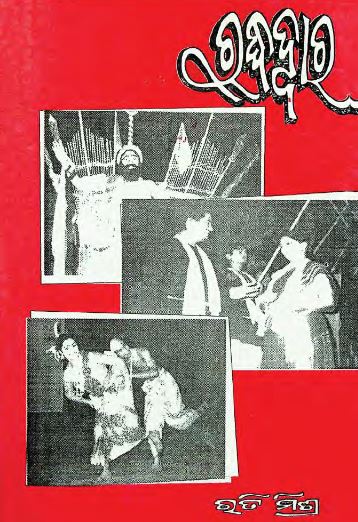Ruddhadwara, an evocative Odia drama written by Rati Misra and published in 1994, stands as a milestone in modern Odia literature. This work, celebrated for its layered narrative and refined theatrical style, is composed of several sub-dramas that intricately interweave personal, social, and cultural explorations. Misra’s work deftly uses the drama form to present a contemplative examination of the human condition, the often conflicting nature of tradition and modernity, and the transformative power of inner resolve.
At its core, Ruddhadwara is an invitation to look beyond the veneer of everyday life. Through the interplay of its sub-dramas, the book reveals multifaceted characters and scenarios that speak to universal experiences of love, loss, ambition, and despair. Each sub-drama functions as a microcosm of the wider human society, reflecting the shifting dynamics and tensions that have come to define a rapidly changing world. The dialogues are carefully constructed, allowing characters to voice grievances, hopes, and conflicts in a language that is both familiar and deeply poetic—a testament to Misra’s profound grasp of the Odia tongue and its cultural nuances.
One of the striking features of Ruddhadwara is its non-linear narrative structure. Rati Misra crafts the sub-dramas in a way that, while each stands on its own as an independent narrative, they collectively contribute to a larger mosaic of thought. This approach not only challenges the reader’s perception of time and causality but also reflects the complexity of human emotions and the unpredictability of life’s journey. The dramatic structure blurs the boundaries between past and present, memory and reality, inviting the audience to reflect on how personal histories intertwine with the cultural and social fabric of society.
The themes of conflict and reconciliation are central throughout Ruddhadwara. Misra meticulously portrays the inner turmoil of her characters as they navigate societal expectations, personal desires, and the inherent contradictions of modern life. The sub-dramas oscillate between moments of intense confrontation and quiet introspection, resonating with anyone who has ever confronted the challenges of identity and belonging. In a society steeped in tradition yet evolving with modern influences, the drama strikingly illustrates how individuals negotiate their place in a world marked by change and uncertainty.
Rati Misra’s Ruddhadwara is also notable for its inventive use of dialogue and symbolism. Everyday objects and settings are imbued with deeper meaning, evoking cultural symbols and resonant metaphors that enrich the dramatic narrative. The work’s title itself—Ruddhadwara—evokes images of thresholds and portals, suggesting that each sub-drama is not just a story to be told, but a gateway to new insights and paths of understanding. This symbolic doorway invites audiences to step beyond conventional interpretations and experience the transformative potential of art.
In sum, published in 1994, Ruddhadwara by Rati Misra is much more than a collection of plays; it is a profound exploration of the complexities of human experience rendered in a dramatic form. Its innovative structure, rich symbolic language, and deep cultural engagement mark it as an essential work in Odia literature, offering enduring insights that continue to inspire and challenge audiences to reimagine the possibilities of the dramatic art form.
Books Info
| Books name | Ruddhadwara |
| Author | Rati Misra |
| No Of pages | 68 |
| Publisher | Arjya Prakashana |
| Publication | 1994 |
| Printed At | NA |
| Distributor | NA |

